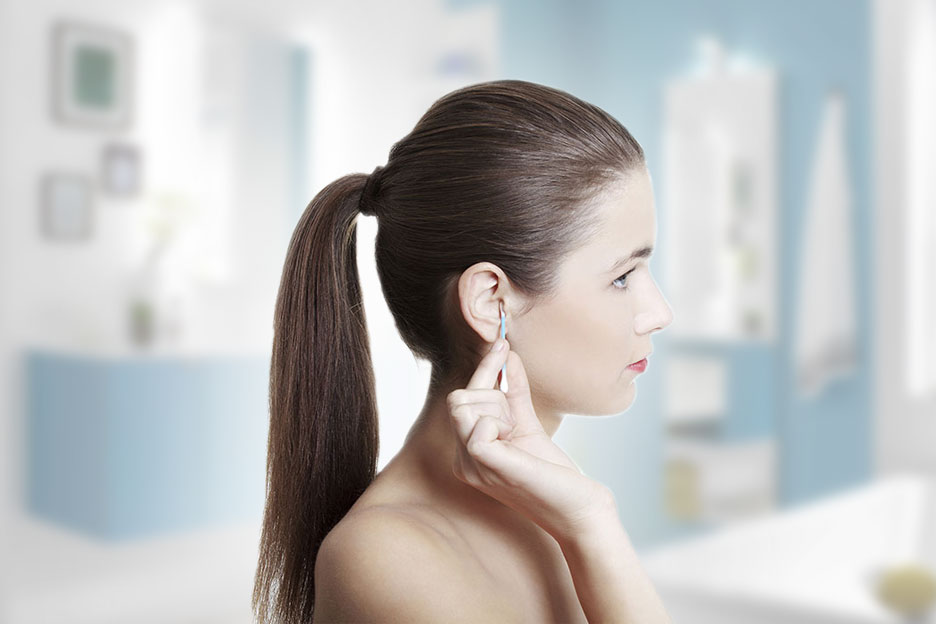Generally speaking, earwax, also known as cerumen, removes itself naturally from the ear. However, in some cases, a blockage may form and affect your auditory health. There are several solutions, some of which are very simple, that can help eliminate earwax efficiently while protecting the health of your ears.

Earwax: not so pretty, but useful
Many people mistakenly believe that the production of earwax is abnormal and that it is best to keep removing it from the ear canal. Although an excessive accumulation of earwax can indeed become problematic when a blockage is formed, it is important to know that cerumen can also be beneficial.
Cerumen is a waxy, yellowish substance that is secreted in the external auditory canal. It can present itself in many different forms, from liquid to very solid.
Earwax is useful in several ways, allowing to:
- lubricate and protect the eardrum and the walls of the ear canal;
- provide protection against foreign matter such as dust, bacteria and insects (it can therefore also provide some protection against otitis externa, including swimmer’s ear).
The ear’s external canal usually cleanses itself through a natural movement of the cerumen towards the outside of the ear. However, the natural earwax-removal process can occasionally be hindered and a blockage may form, which then needs to be removed through various methods, depending on the severity of the situation.
Causes of excessive earwax accumulation
Earwax can have a tendency to accumulate in some situations. For example:
- advanced age (earwax becomes drier and more difficult to remove from the canal in elderly people);
- wearing a hearing aid or earplugs;
- a very narrow external auditory canal;
- hair in the ear canal;
- using cotton swabs (Q-Tips) to clean the ear;
- excessive production of cerumen;
- foreign matter in the ear.
Symptoms to watch for!
An earwax blockage can manifest itself in many ways:
- sensation of blocked ear or pressure in the ears;
- irritation and/or itchiness;
- pain and/or discomfort;
- buzzing in the ear;
- vertigo or loss of balance;
- partial or total hearing loss;
- persistent cough.
How can I remove the earwax blockage myself?
First and foremost, avoid using cotton swabs or any other sharp object to remove earwax. This might make the situation worse or even cause severe injury.
Several products can help to either soften or dissolve the blockage in order to facilitate its removal. The following chart explains various simple treatment options.
|
PRODUCT |
HOW TO USE |
COMMENTS |
|---|---|---|
|
Mineral oil, olive oil, almond oil |
Put 3-4 drops in the ear canal 1-2 times a day for 3-7 days |
Also useful for prevention; put 2 drops in the ear canal once a week |
|
Glycerin |
Put 4-6 drops in the ear canal 2 times a day for 3-7 days |
Also useful for prevention |
Commercial products are also available at the pharmacy. It is important to note that some products contain peanut oil and are therefore contra-indicated in people who are allergic to peanuts. Your pharmacist will provide you with all the help you need to choose the most appropriate product.
No matter which treatment you opt for, it is recommended to:
- warm the drops by holding the container in your hands for a few minutes (never use a microwave oven to warm drops);
- squeeze the drops into the ear canal, head tilted to the side, without inserting the dropper in the ear;
- stay in this position for a few minutes after squeezing the drops;
- insert a cotton ball in the ear to make sure the product doesn’t leak out, especially for children;
- do not insert liquid with a syringe yourself since the pressure of the liquid could damage your eardrum.
When should I see a doctor?
It is important to not perform self-treatment and to see a doctor if you have:
- had a ruptured eardrum;
- signs of infection (recurrent otitis) or ear trauma;
- had ear surgery in the past six weeks or have ear tubes;
- intense pain;
- leaking liquid (clear or purulent) or blood in the ear canal;
- fever.
In addition, if you have tried one of the above-mentioned home treatments and have not obtained the desired results, it is best to see a doctor who will use mechanical methods, if needed, to remove the earwax blockage.
